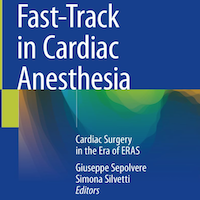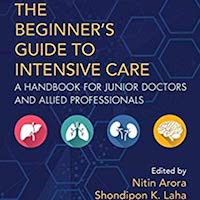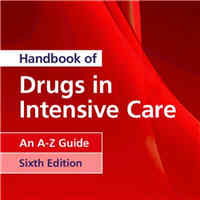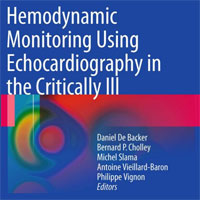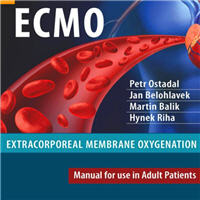Promise Healthcare first long-term acute care (LTAC) facility to install portable CT scanner
Promise Hospital of Florida at The Villages' new BodyTom CT scanner from Samsung NeuroLogica offers in-house scanning for patients who may have difficulty being transported to imaging facilities.... read more
Simultaneous assessment of the synthesis rate and transcapillary escape rate of albumin in inflammation and surgery
Single measurements of the synthesis rate and/or transcapillary escape rate of albumin obviously cannot explain the plasma level of albumin or the changes seen in plasma albumin concentration.... read more
PCSK9 Inhibition and Other New Therapies for Lipid Modification: Good News and Bad
A late-breaking clinical trial session devoted to newly approved and investigational compounds for the treatment of lipids highlighted the end of a once promising therapy for low HDL cholesterol.... read more
Potentially modifiable factors contributing to outcome from acute respiratory distress syndrome: the LUNG SAFE study
Higher PEEP, lower peak, plateau, and driving pressures, and lower respiratory rate are associated with improved survival from ARDS.... read more
New statin guidelines issued for primary CVD prevention
The United States Preventive Services Task Force have issued new recommendations for the use of statins in primary prevention of cardiovascular disease.... read more
COPD Awareness Month 2016: Atrial fibrillation, Crohn’s disease, chronic kidney disease, depression, and asthma
November is COPD Awareness Month, so in light of this we present our articles discussing COPD and related topics, such as atrial fibrillation, Crohn’s disease, chronic kidney disease, depression, asthma, and ulcerative... read more
Study: Integration of eICU Telemedicine Program Improves Patient Outcomes
New CHEST study reveals greater integration of eICU telemedicine teams with bedside care achieved shorter lengths of ICU and hospital stays.... read more
Physicians Say 2 Hours a Day Spent on Digital Records
Clinicians are spending nearly two hours working on electronic health records (EHRs) for every hour they spend with a patient.... read more
Sepsis-3 definitions predict ICU mortality in a low-middle-income country
The medical records of 957 patients were retrieved from a prospectively collected database. Serum lactate improved accuracy for values higher than 4 mmol/L in the no-dysfunction and septic shock groups.... read more
Hepatitis B Drug Combination Approved
Tenofovir-alafenamide combination approved by the FDA for chronic hepatitis B infection.... read more
New Screening Test Identifies Potential Therapies to Fight Drug-Resistant Bacteria
Researchers at the NCATS and NIAID have found a new way to identify drugs and drug combinations that may potentially be useful in combating infections that are resistant to antibiotics. The researchers used the test to screen... read more
New discovery paves way for pancreatic cancer treatment
Patients suffering from pancreatic cancer may soon face better treatment options due to the latest discovery by Dr. Reginald Hill, who's research focuses on drugs that are already approved by the FDA.... read more
FDA Approves Carnexiv Injection for Seizures
The FDA has approved Carnexiv (carbamazepine) injection as a short-term replacement therapy for oral carbamazepine formulations for adults with certain seizure types.... read more
Reducing Developmental Neurotoxin Exposure
This Medical News article discusses a push to reduce pregnancy and childhood exposures to neurodevelopmental toxins.... read more
Tips Offered for Deep Propofol Sedation And Aspiration in Non-OR Settings
With exponential growth in the number of procedures being done under anesthesia, especially in the gastrointestinal suite, providers are wondering about the best way to provide safe, efficient and affordable care but also... read more
High Hospital Profits Hurt Medicine, Expert Says
Is the medical profession losing the race to attract the best and the brightest? In a commentary published in the American Journal of Medicine, retired cardiologist Robert M. Doroghazi, MD, explains how high hospital profits... read more
CT said to be 'effective gatekeeper' for coronary angiography
Study found the length of stay was shortened by 22.9 hours with CT, and patients preferred noninvasive testing.... read more
Beating the Dunning-Kruger Effect at Its Own Game
Dunning-Kruger effect occurs when individuals assume that their competency in a given area is significantly higher than it is.... read more
Carotid stenting tied to cardiovascular events in real-world study
Carotid stenting was associated with a 30% higher risk of cardiovascular events than that of carotid endarterectomy during 12 years of follow-up in a large real-world study.... read more
New Certifications Confirm Growing Influence Of Knowledge Professionals On Nursing Practice, Patient Care
PCCN-K and CCRN-K credentials from AACN Certification Corporation recognize contributions of nurses who positively influence care delivered to acutely and critically ill patients.... read more
Long-Term Oxygen for COPD with Moderate Desaturation
The prescription of long-term supplemental oxygen did not result in a longer time to death or first hospitalization than no long-term supplemental oxygen in patients with stable COPD.... read more
Cardiotoxicity from Ca Immune Tx; Worried Sick; Bee Sting Heart Damage
Worried sick? Anxiety about health was associated with increased likelihood of ischemic heart disease.... read more


